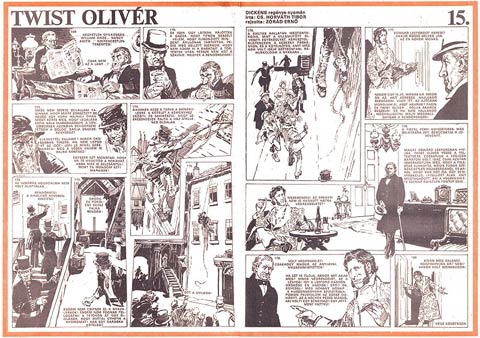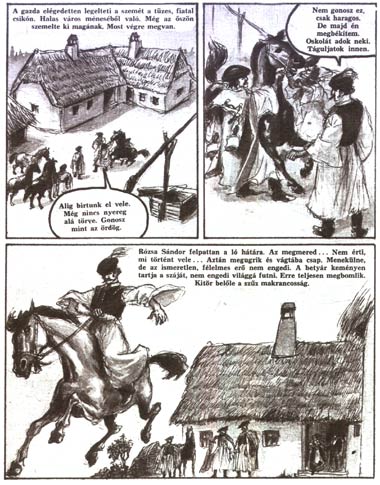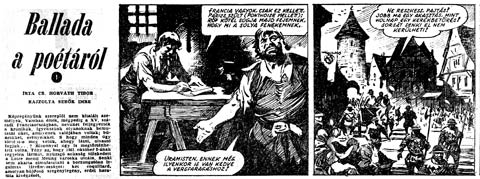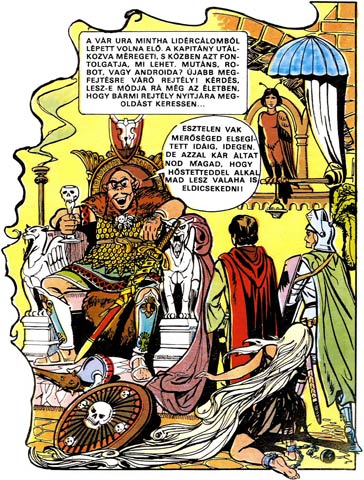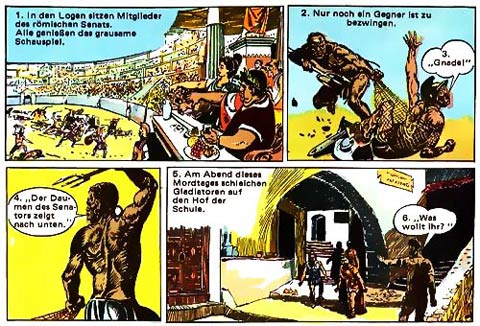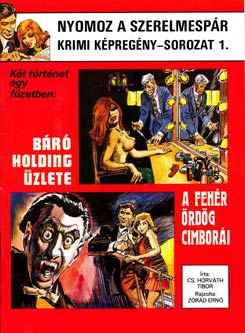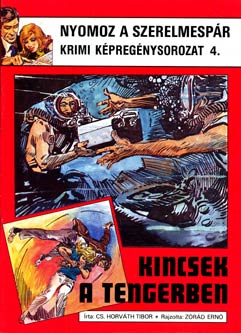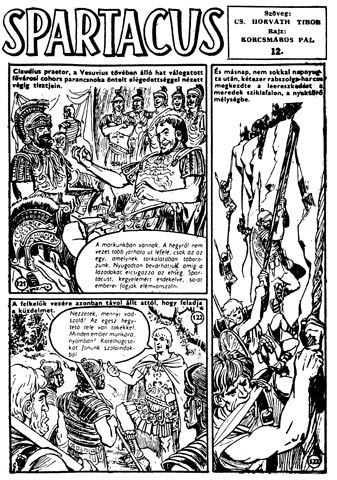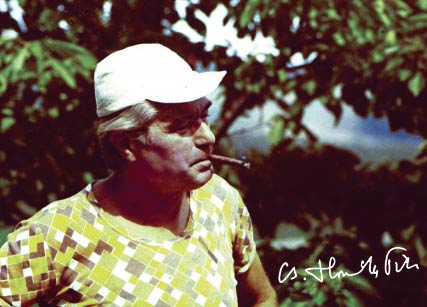'The Message of the Starship', artwork by Ernö Zórád.
Tibor Cs. Horváth was the most productive Hungarian comic book scriptwriter and the godfather of comic book adaptations. He learned typography in his youth. Around 1955, when he worked at the Educational Department of the Ministry of Culture, Sándor Gugi, a Hungarian illustrator contacted him to produce comics similar to the American Classics Illustrated series.
'Sándor Rózsa', artwork by Pal Korcsmáros.
Horváth managed to convince the socialist heads of board that the comics would be different from their decadent western counterparts (whih had already been banned from the pages of Hungarian papers by that time). His comic books were regarded as adverts for "harmless" books which had not been blacklisted by the party until then and were supposed to encourage working people to read literary works. Thus the emblematic pieces of the medium were born in the pages of Új Világ, Szabadságharcos and Po Sztránye Szovetov.
'Ballad of the Poet', artwork by Imre Sebök.
The team-up of Horváth and Gugi outlined the direction of Hungarian comics for the next 40 years to come. After 1956, to avoid being identified with another person of the same name, he adopted the abbreviation "Cs." (that stands for Csepreghy, referring to his inherited title of nobility).
'The Enchanted Planet', artwork by Attila Fazekas.
Cs. Horváth was one of the founding members of Füles (a weekly publication launched in 1957, mainly focusing on crossword puzzles). As a leading figure of the editorial staff, he adapted and scripted several hundred comics stories until the 1980s. Besides Füles, he worked for a whole lot of other publications (e.g. Magyar Ifjúság, Népszava, Lobogó, Pajtás, Képes nyelvmester) as well.
'Rise of the Robotors', artwork by Imre Sebök.
Cs. Horváth built a whole industry around the comic book and his creative team was made up of such prominent artists like Sandor Gugi, Pál Korcsmáros, Imre Sebök, Attila Fazekas, Mihály Vass, Marcell Jankovics, Attila Dargay, Endre Sarlós and Jenö Németh. Due to his organizing genius many of his stories were published in comic book format in the countries of the socialist block. His comics were translated to Esperanto as well.
'Der Recke von Capua' ('The Beast of Capua'), from German magazine Frösi. Artwork by Ernö Zórád
His most popular comic series 'Roberto és Julika kalandjai' was about the adventures of Italian journalist Roberto and Hungarian handball player Julika across the globe. This seven part series was illustrated by Ernö Zórád, and published between 1970 and 1973.
Cover illustrations for Roberto and Julika #1 and #4, artwork by Ernö Zórád.
Other notable works scripted by Horváth were 'Spartacus' (1961), 'A Capuai Fenevad' ('The Beast of Capua', 1963), 'Sándor Rózsa' (1964), 'Ballada a Poétáról' ('Ballad of the Poet', 1965), 'Robotorok Lázadása' ('Rise of the Robotors', 1966), 'A Csillaghajó Üzenete' ('The Message of the Starship', 1972), 'Titkok Bolygója' ('The Enchanted Planet', 1982).
'Spartacus', artwork by Pal Korcsmáros.
Over the years, Horvath has often been accused of writing too overly narrated scripts. In reality, editorial directives were to blame, as the number of pages devoted to comics were strictly set in every magazine.
Tibor Horvath should not be confused with Tibor Horvath, the Hungarian-Swedish ballet dancer, who became a transgender in 2015.
'Oliver Twist,' artwork by Ernö Zorad.
In 1993, the company changed owners and would lay no claim to his services at Füles any more, where had spent 36 years. Horváth couldn't bear being neglected, as comics was his life: the king of comic book scriptwriting died on 12 July, 1993. His death meant the end of the golden age of Hungarian comics.
Tibor Cs. Horváth.


